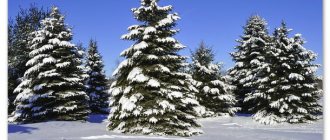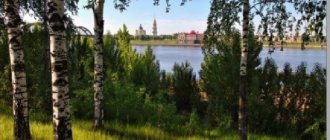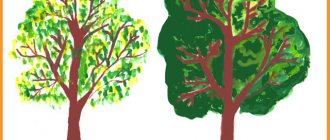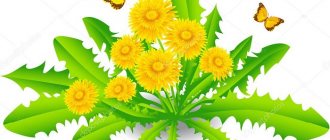- Reports and messages
- Plants
- Rowan
Rowan is an unforgettable plant, the bright berries of which often turn us to the past, to childhood, or remind us of warm summer.
In the old days, it was mentioned in every home as a protector against illnesses. Currently, there are many signs associated with it. If we take the meaning of the word ripple as a basis, then we can compare the appearance of the berries from a distance with irregularities and protrusions on the surface. This became one of the options for the name of the berry.
It is found in the Urals, the territory of the North Caucasus, and occupies the forest zone of the European part of Russia. Among the main characteristics of mountain ash, the first place is its adaptability to harsh winter conditions; in addition, it loves shade and moisture. The climate of the southern regions of Russia is difficult to tolerate.
There are more than 80 species of rowan in the world. The most common mountain ash is a small tree (up to 15 meters), the table of which has a smooth gray surface. The crown resembles an openwork pattern.
Rowan blossoms typically occur in late summer and early autumn. The unusually bright fruits of this tree, collected in clusters, are very similar in structure to apples. Each bunch contains up to 50 berries. The rowan berry contains from 4 to 8 seeds. Its leaves are miniature and have serrated edges. Rowan berries acquire their unique taste with the onset of frost.
The lifespan of this tree reaches 200 years. The first flowering of rowan occurs at the age of 7 years.
The use of rowan is so widespread that children know about it. This is an ornamental plant that serves as decoration in the home or at a holiday. Well-known types of painting, for example, Khokhloma, contain drawings with weighty bunches of these berries. Currently, the use of mountain ash in landscape design is widespread. Bright fruits, which sometimes delight people even in winter, give a great mood. The leaves are suitable for preparing decoctions and infusions. Rowan berries form the basis of food for birds and animals. For humans, it is a storehouse of vitamins, including malic acid, vitamin C, and a large amount of carotene. Tannins contained in both berries and wood. Prevents the process of decay. That is why the durable, elastic wood surface of rowan has been used for a long time in the construction industry, for the manufacture of joinery.
Delighting the eye with its rich color, it takes place in works of art - painting, folk art, literature.
Report No. 2
Rowan is a low tree or tree-like shrub. Belongs to the deciduous genus and the Rosaceae family.
These trees are common in temperate climate zones: in Russia, Europe, Asia, and the north of the Caucasus. They grow in single specimens in forest and forest-steppe areas, on forest edges and clearings, as well as in parks, squares, and courtyards. The tree is unpretentious and grows on almost any soil.
Rowan has a very beautiful appearance. This tree has a smooth, smooth, shiny trunk and a dense, openwork foliage crown. It usually grows to a height of about 10 meters. The trunk of this tree is durable and elastic and is used for making dishes, carts, tool handles and in carpentry. And from rowan branches they weave furniture and various accessories.
Rowan blooms in late spring - early summer. When blooming, the flowers are white, pink or cream in color and are folded into umbrellas. The fruits ripen in early autumn. The berries are spherical in shape and colored bright red or bright orange. The size of these fruits is 10 mm, and they taste bitter. Rowan leaves have an oblong, pointed shape and are no more than 20 cm in size. In autumn, the leaves turn yellow and red. The lifespan of rowan is about 100 years.
Rowan is a winter-hardy tree, so it can withstand frosts in winter without any problems. Rowan fruits are distinguished by strong bitterness, which disappears after the first light frost and the berries acquire a sweetish taste. Rowan does not shed its berries in winter, thereby attracting the attention of titmice and bullfinches.
There are about 80 types of rowan. And only a few types of rowan grow in Russia: common, Siberian, smooth, Kashmir. The most common is the ordinary type. The berries of this species are red in color and have a tart, bitter taste. Siberian mountain ash is also called Anadyr or polar. This species survives frost, but grows no more than 3 meters in height. Smooth rowan or Amur rowan differs from other types in the orange color of the berries. And the Kashmiri mountain ash has completely white berries. This rowan is grown mainly for decorative purposes.
Currently, the most popular varieties are: Titan, Scarlet large, Rubinovaya, Daughter Kubovaya, Businka, Burka, Granatnaya, Dessertnaya, Vefed, Michurinskaya dessert, Angri. The Titan, Granatnaya and Burka varieties are excellent for preparing decoctions that are used for illnesses. And the varieties Vefed, Businka and Daughter Kubova have a sweetish taste. But the sweetest variety is Michurinskaya dessert. The Angri variety is characterized by large berries the size of cherries.
Rowan is a very healthy fruit tree, as it contains a large amount of vitamins A, B, C, as well as potassium, phosphorus, zinc, calcium and iron. Rowan fruits are eaten fresh, dried and pickled. The berries are used to make medicines, marshmallows, marmalade, syrups, compotes, add to tea, and also make jam, jams and preserves from them.
Description of the plant
Sorbus are summer-green shrubs and low-growing trees with an average height of 15 m. Individual specimens, on which the shadow of competing species does not fall, grow up to 2530 m. The age of representatives of the genus Sorbus usually reaches 80 years, but sometimes (mainly in the mountains) they live up to 120 years. In the first 20 years, trees and shrubs grow relatively quickly, then growth stops.
Photo: how rowan berries grow
Rowan trees are slender, with an oval or round, loose crown of irregular shape. The barrel is cylindrical. The branches are spaced from it or directed diagonally.
Rowan bark
The smooth, shiny bark of young plants is yellowish to greenish-gray in color, covered with elongated lentils that facilitate gas exchange. With age, it acquires a matte gray or brown color and a cracking structure. In some specimens in old age, the lower part of the trunk becomes blackish. Young shoots are usually shaggy and ash-gray in color.
Rowan leaves
The leaves, alternately located on the branches, are simple or odd-pinnate, divided into a petiole and oblong-elliptic plates with short petioles, a pointed apex and a rounded base. The edge is mostly serrated, less often continuous. The upper side of the plates is smooth, green, and the lower side is gray-green, in some species with a light white-felt cover. Stipules usually fall off early.
Photo: rowan leaves in autumn
Rowan flowers
Depending on the species, the plant blooms in spring or summer. The inflorescences are corymbose panicles, in which many small flowers are collected, emitting an intense, specific aroma. The axes of the inflorescences are completely covered with hairs (ssp. Aucuparia) or almost bare (ssp. Glabrata).
Bisexual flowers about 10 mm in diameter, radially symmetrical, with a double perianth. The five sepals are smooth or hairy, ovate or pointed, short triangular in shape, 1.5 to 1.8 mm long. When the fruits ripen, they retain their fleshy consistency.
Photo of blooming rowan
Five unfused white, creamy-white or pinkish petals, 35 mm long, round-elliptical or broadly ovate, smooth or pubescent. The length of the 2025 (rarely 44) stamens, arranged in 23 circles, is almost the same as the petals. The anthers are ovoid or almost round. Below there are 25 carpels, free or fused together and attached to the hypanthium. Pistils with three columns, glabrous or pubescent.
Rowan fruits
The fruits are small apples from ovoid or round to ellipsoidal or oblong, smooth or covered with hairs. They come in white, yellow, pink, brown, orange and yellow.
They ripen in August, September or October and often remain on the branches until winter. At the top, rowan, like apples, retains 5 sepals. Each of the 27 chambers of the seed nest contains 12 seeds.
Before frost, fresh fruits are sour, tart and bitter. After the first frost, the bitterness disappears, they become sweet and sour and are eaten by birds, squirrels and other animals. The variety of Sorbus aucuparia, known as Nevezhinskaya, has fruits that are sweet and frosty. The Crimean variety Sorbus domestica is interesting, with large (up to 3 cm), pleasant-tasting fruits.
Photo: mountain ash in winter
Rowan tree
Rowan is a tree that never grows tall (more than 10 m). There are just over 100 species of rowan, about 30 of which can be found in Russia. This tree is widespread in European countries, lives in North America, and also grows in Asia. Such a large habitat of the plant is due to the fact that rowan is not at all afraid of frost; it can grow on any soil. It even “climbs” into the mountains, but there it grows in the form of a bush. It is also not afraid of close-lying groundwater, which for most trees is an unsuitable factor for good growth.
Because of this unpretentiousness to climatic conditions, this tree can be used in gardening as a rootstock: used as a mother plant, grafting a quince or pear onto the rowan trunk. The so-called chokeberry is not a rowan, it is a different tree, although from the same family - Rosaceae.
Rowan is easily recognized by its leaves, which have from 11 to 23 leaflets. Young, just blossomed, they are a little “fluffy”, then they become naked. They are green in the summer and turn orange and red as autumn approaches.
The rowan tree blooms very beautifully. Its small flowers form very dense inflorescences located at the ends of the branches. The smell is quite specific, not everyone likes it, but insects pollinate the tree well. Rowan is a valuable honey plant.
After flowering, characteristic fruits are formed on the tree, similar to peas or beads, their diameter is about 1 cm. It is more correct to call them apples, since the tree belongs to the apple group. The fruits are bright red or deep orange, collected in clusters, each containing seeds.
Rowan fruits are rich in sugars, vitamins, especially ascorbic acid, and carotene. Therefore, the fruits of the tree can be used to treat scurvy. They also contain antiseptic substances (sorbic acid). The fruits are eaten, prepared as tinctures, made into jam, dried and even pickled. While they are fresh, they taste very bitter. But when the first frosts come, it disappears, the bitter substances of the fruit are destroyed.
Trees are often planted for decorative purposes. Wood can be used to make carpentry and jewelry. It is reddish and beautiful, it is well processed, painted, and easy to carve.
Rowan fruits do not fall in the winter, so they are an important food supply for wintering birds. They can also be fed to poultry.
The ancient Scandinavians and Celts, as well as the Slavs, considered rowan a magical tree and used it in their rituals. Rowan has long been used in folk omens. So, if there are a lot of fruits on the trees, then the autumn months will be rainy.
2nd, 3rd, 4th, 5th grade, the world around us
Summary of a comprehensive lesson for children of the senior group “Miracle Rowan Berry”
Svetlana Klimenko
Summary of a comprehensive lesson for children of the senior group “Miracle Rowan Berry”
• Expand and clarify children's knowledge about rowan .
• Develop curiosity and interest in nature.
• Develop the ability to see the beauty of nature.
• Learn to reflect the results of observations in speech, compose a story;
• Develop aesthetic taste, enrich and activate vocabulary (brush, bunch of rowan , aroma, drink)
;
• Strengthen the ability to accurately convey the shape, size and other features of a rowan , peer into nature, notice its originality; learn to compare the resulting image during the sculpting process; develop the ability to expressively design your work, attaching sculpted parts to the base, develop creativity, hard work, and the desire to complete the craft to the end.
rowan branch while walking, rowan leaves and berries , writing descriptive stories about them, playing active and didactic games with leaves, learning I. Tokmakova’s poem “ Rowan ”
.
Popular message topics
- Environmental problems
The faster technological progress occurs and the introduction of more and more technologies into all spheres of people's lives, the more comfortable life becomes for modern people. Cars and airplanes have allowed us to travel around the world in thousands - Hard drive
A computer is an indispensable tool today for performing a huge number of tasks. It is the wide range of computer capabilities that makes it necessary to store a large amount of content inside it. - Ferret
The domestic ferret is a solitary carnivore, which now more often becomes a reliable friend for any person. The character of the furo manifests itself by the 3rd month of life, and even then it is necessary to train this intelligent creature,
Report about Rowan 2, 3, 4, 5 grade message, the world around us
Rowan is an unforgettable plant, the bright berries of which often turn us to the past, to childhood, or remind us of warm summer. In the old days, it was mentioned in every home as a protector against illnesses. Currently, there are many signs associated with it.
If we take the meaning of the word ripple as a basis, then we can compare the appearance of the berries from a distance with irregularities and protrusions on the surface. This became one of the options for the name of the berry.
It is found in the Urals, the territory of the North Caucasus, and occupies the forest zone of the European part of Russia. Among the main characteristics of mountain ash, the first place is its adaptability to harsh winter conditions; in addition, it loves shade and moisture. The climate of the southern regions of Russia is difficult to tolerate.
Rowan blossoms typically occur in late summer and early autumn. The unusually bright fruits of this tree, collected in clusters, are very similar in structure to apples. Each bunch contains up to 50 berries. The rowan berry contains from 4 to 8 seeds. Its leaves are miniature and have serrated edges. Rowan berries acquire their unique taste with the onset of frost.
The lifespan of this tree reaches 200 years. The first flowering of rowan occurs at the age of 7 years.
The use of rowan is so widespread that children know about it. This is an ornamental plant that serves as decoration in the home or at a holiday. Well-known types of painting, for example, Khokhloma, contain drawings with weighty bunches of these berries. Currently, the use of mountain ash in landscape design is widespread. Bright fruits, which sometimes delight people even in winter, give a great mood. The leaves are suitable for preparing decoctions and infusions. Rowan berries form the basis of food for birds and animals. For humans, it is a storehouse of vitamins, including malic acid, vitamin C, and a large amount of carotene. Tannins contained in both berries and wood. Prevents the process of decay. That is why the durable, elastic wood surface of rowan has been used for a long time in the construction industry, for the manufacture of joinery.
Delighting the eye with its rich color, it takes place in works of art - painting, folk art, literature.









